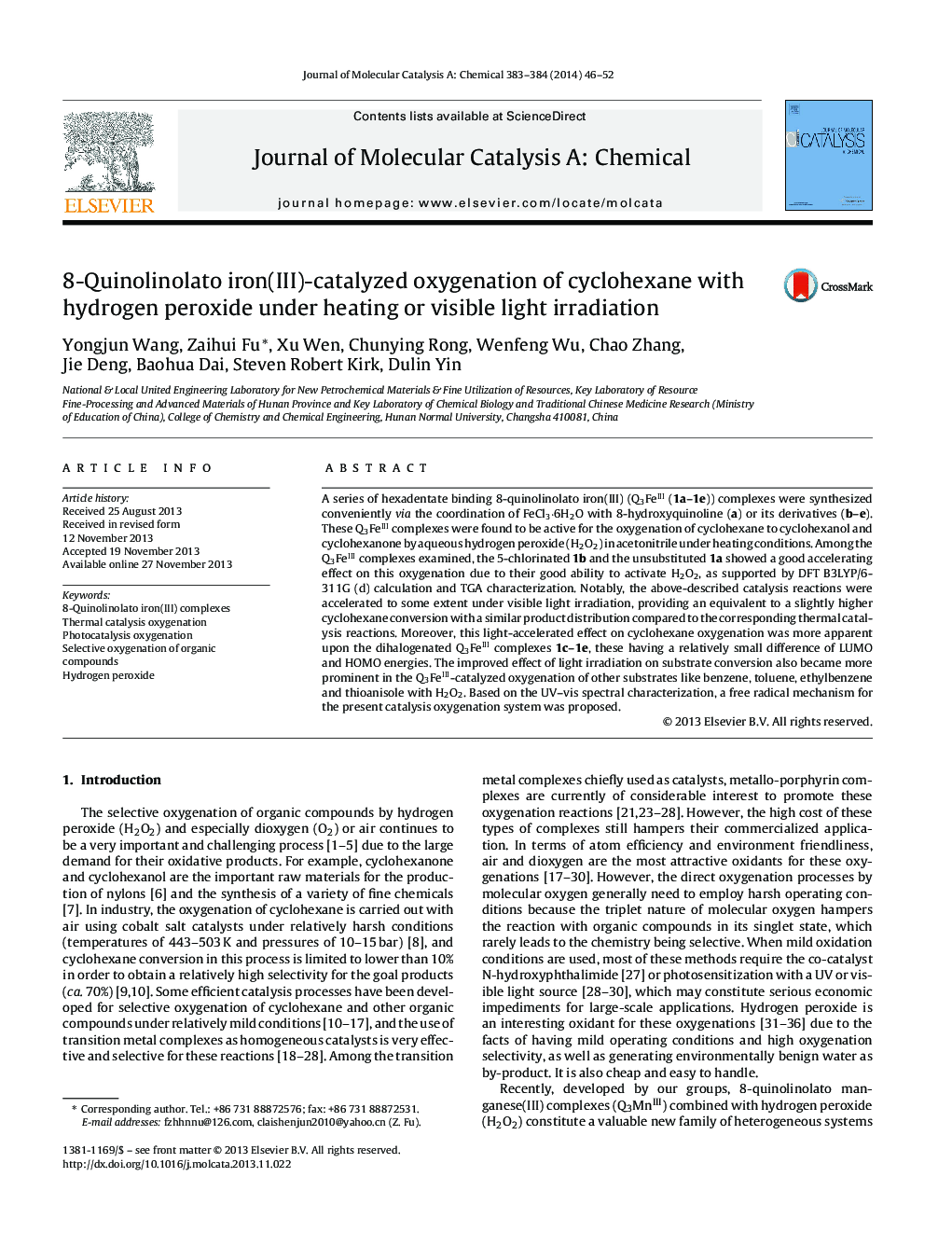| کد مقاله | کد نشریه | سال انتشار | مقاله انگلیسی | نسخه تمام متن |
|---|---|---|---|---|
| 65585 | 48397 | 2014 | 7 صفحه PDF | دانلود رایگان |

• Using more accessible 8-quinolinolato iron(III) (Q3FeIII) complexes to catalyze the selective oxidation of organic compounds by hydrogen peroxide.
• Important substituent's effect of the Q3FeIII catalyst on their oxidative activity.
• Significant and outstanding accelerating effect of visible light on the Q3FeIII-catalyzed oxidations.
A series of hexadentate binding 8-quinolinolato iron(III) (Q3FeIII (1a–1e)) complexes were synthesized conveniently via the coordination of FeCl3·6H2O with 8-hydroxyquinoline (a) or its derivatives (b–e). These Q3FeIII complexes were found to be active for the oxygenation of cyclohexane to cyclohexanol and cyclohexanone by aqueous hydrogen peroxide (H2O2) in acetonitrile under heating conditions. Among the Q3FeIII complexes examined, the 5-chlorinated 1b and the unsubstituted 1a showed a good accelerating effect on this oxygenation due to their good ability to activate H2O2, as supported by DFT B3LYP/6-311G (d) calculation and TGA characterization. Notably, the above-described catalysis reactions were accelerated to some extent under visible light irradiation, providing an equivalent to a slightly higher cyclohexane conversion with a similar product distribution compared to the corresponding thermal catalysis reactions. Moreover, this light-accelerated effect on cyclohexane oxygenation was more apparent upon the dihalogenated Q3FeIII complexes 1c–1e, these having a relatively small difference of LUMO and HOMO energies. The improved effect of light irradiation on substrate conversion also became more prominent in the Q3FeIII-catalyzed oxygenation of other substrates like benzene, toluene, ethylbenzene and thioanisole with H2O2. Based on the UV–vis spectral characterization, a free radical mechanism for the present catalysis oxygenation system was proposed.
The hexadentate binding 8-quinolinolato iron(III) (Q3FeIII, 1a–1e) complexes designed by the author were found to be active for the selective oxidation of cyclohexane and other organic compounds by hydrogen peroxide under heating condition and visible light irradiation could significantly accelerate these catalysis reactions.Figure optionsDownload high-quality image (174 K)Download as PowerPoint slide
Journal: Journal of Molecular Catalysis A: Chemical - Volumes 383–384, March 2014, Pages 46–52